British shirt maker Thomas Pink aligns with heritage mill James Cropper on its paper-thin A/W 2015 men’s presentation
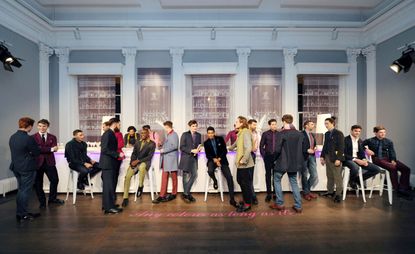
Thomas Pink turned over a new leaf with its London Collections: Men A/W 2015 presentation, crafting a paper installation to set its latest ready-to-wear showcase against.
Building upon last year's urban scaffolding themed construction, the LVMH-owned brand paired up with one of the UK's oldest traditional paper mills James Cropper (who also supplies Wallpaper's custom stationery) to create this season's light-as-a-feather showcase, housed within London's Institute of Contemporary Arts.
Creative director Florence Torrens also enlisted event specialist Flow Creation to erect the scene that was dominated by a 30 ft brasserie-style 'long bar' constructed from 315gsm Kendal Manilla paper stock. 'Upon seeing the venue we felt it was important to be sensitive to the existing features of the rooms,' explains Flow Creation creative director Sam Robins. 'Our cues were taken from the venue's Corinthian styling to form the basis of the bar's design.'
So why paper? 'There is a purity within a well-made paper,' Robins continues, 'and its fragile and temporary nature promotes delicate and detailed design.' To execute this vision Robins called in the professionals. James Cropper has a papermaking heritage that started in 1845 in the Lake District, and has since been nurtured by six generations of the Cropper family. '
Kendal Manilla has nearly two centuries of paper-making experience behind it and is firmly established as a benchmark for quality in the art, craft and stationery markets,' James Cropper commercial director Chris Brown explains. 'It is perfect for the intricate construction of the finer decorative elements and its inherent strength works well in the more structural sections of the bar itself.'
In addition to the bar - designed to echo the purist archetype of a white shirt - paper was also used to fashion lamps, teacups, glassware and vases of flowers. Here, CAD cutting and creasing techniques formed crisp lines and angles, while the natural tension of paper was used to create flowing curves. 'Besides its paper-making pedigree,' Brown adds, 'Kendal Manilla is also a sustainable paper option, containing up to 40 percent reclaimed fibres from single-use coffee cups recycled in our recycling plant - giving a former waste material a new lease of life.'
Thomas Pink's product offering, meanwhile, underwent its own reinvention. 'The focus for winter is on the eccentric way the Brits dress and on the beauty of nonchalantly mixing formal with casual,' says Thomas Pink head of design Fred Willems. He used Sir Michael Caine's sharp threads in 1960s flick Get Carter as his starting point, shared with the backdrop of the English capital. 'London and its urban cool keeps on inspiring us and gives the brand what it is famous for: quirkiness, boldness and fun,' he continues.
Prince of Wales checks were exaggerated for the brand's signature shirting, with one look inspired by the windowpane check of London's telephone boxes. Cashmere sweaters in cable and zip necks were joined by a luxe rugby jersey similarly cut in cashmere ahead of this year's World Cup. For the evening, velvet and textured Donegal tweed added a sartorial dash as outerwear built upon the traditional Covert coat with contrasting jewel coloured collars. 'It creates a better feeling of the Thomas Pink lifestyle,' Willems adds of the expanded offering, all layered on top of a Thomas Pink shirt naturally.
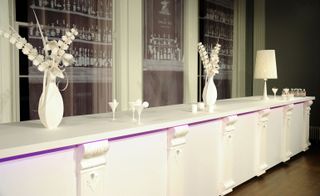
The paper installation, conceived by Flow Creation, was made in collaboration with traditional paper mill James Cropper. Watch the show space come to life in this making of film...

Housed within London's Institute of Contemporary Arts, the paper bar takes cues from the venue's Corinthian styling to form the basis of the its design
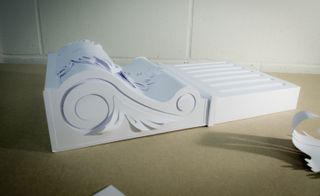
Echoing the purist archetype of a white shirt, CAD cutting and creasing techniques formed crisp lines and angles, while the natural tension of paper was used to create flowing curves
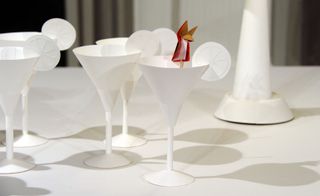
As well as the decorative and structural elements of the bar, paper was also used to fashion glassware, intricate lamps, and vases of flowers
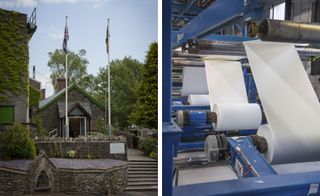
James Cropper has a paper making heritage that started in 1845 in the Lake District, and has since been nurtured by six generations of the Cropper family

Kendal Manilla - used for Thomas Pink's installation - is also a sustainable paper option, containing up to 40 percent reclaimed fibres from single-use coffee cups recycled in James Cropper's recycling plant
Wallpaper* Newsletter
Receive our daily digest of inspiration, escapism and design stories from around the world direct to your inbox
-
 Montblanc’s leather goods evolution offers peak style
Montblanc’s leather goods evolution offers peak styleMontblanc takes design inspiration from its iconic writing archive for new collections of leather goods
By Simon Mills Published
-
 Ray Phoenix to rise in Arizona
Ray Phoenix to rise in ArizonaRay Phoenix housing project launches, designed by Johnston Marklee, who worked with Lamar Johnson Collaborative and artist Alex Israel, for property experts Ray and Vela
By Ellie Stathaki Published
-
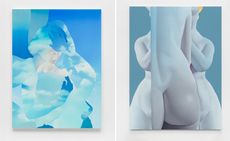 The cosmos meets art history in Vivian Greven’s New York exhibition
The cosmos meets art history in Vivian Greven’s New York exhibitionVivian Greven’s ‘When the Sun Hits the Moon’, at Perrotin in New York City, is the artist’s first solo exhibition in the USA
By Emily McDermott Published
-
 Rounding up the top show venues for the men's S/S 2017 season
Rounding up the top show venues for the men's S/S 2017 seasonBy Ali Morris Last updated
-
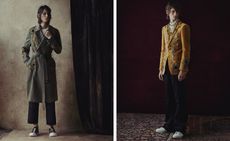 London Collections: Men S/S 2017 editor’s picks
London Collections: Men S/S 2017 editor’s picksBy Jack Moss Last updated